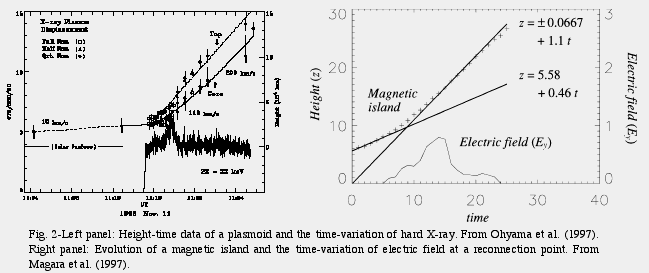

From a viewpoint of the
CSHKP model,
upward reconnection jets are expected to
arise at the onset of flares, which often make a significant contribution
to the ejection of plasmoids.
We performed MHD numerical simulations to study this highly dynamical process.
Observationally,
it is known that an eruptive plasmoid has three evolutionary phases; that is,
the initial gradual rise, the short-term
abrupt acceleration, and the long-lasting steady rise
(Ohyama & Shibata 1997). By comparing simulation
results with these observable features, we clarified the physical processes
in those three phases
(Figure 2). According to our results, a plasmoid
starts rising slowly when a weak resistive process arises
inside the underlying current sheet, then it is accelerated strongly
once a fast magnetic reconnection occurs in the current sheet, and it finally
rises at constant speed after a reverse
fast-mode MHD shock is well developed at the bottom of
the plasmoid (Magara, Shibata, & Yokoyama 1997).
Magara, T., Shibata, K., & Yokoyama, T. 1997, ApJ, 487, 437
Ohyama, M., & Shibata, K. 1997, PASJ, 49, 249